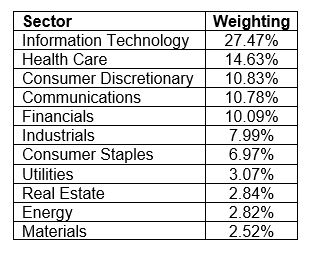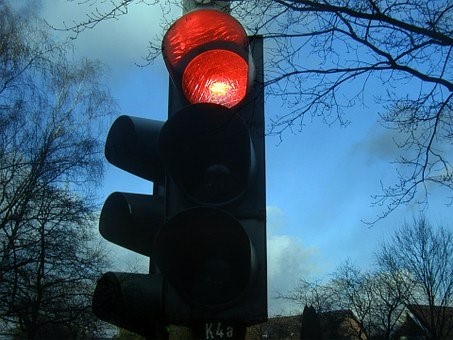
That’s the question investors are asking.
Let me explain in our Summer Market Update. After cruising for the past five months, the markets screeched to a halt on September 3rd. The Dow dropped over 800 points, and the Nasdaq plunged nearly 5%.1 All told, it was one of the worst trading days for stocks since the pandemic-driven panic of March. The volatility continued the next day, albeit at lower levels.
So, what does it mean? Was Thursday’s selloff just a short-term blip – the equivalent of hitting a speed bump? Or was it the beginning of a market correction? If so, how long of a correction? Are we merely coming to a stop sign, or will we hit a red light?
Unfortunately, market signals are never as easy to interpret as road signs. But as we start winding down this bewildering year, investors will be gripping their steering wheels ever more tightly. That’s because they’re all trying to determine whether the markets will end the year on cruise control…or in full reverse.
Whenever you drive to a destination, it’s always good to familiarize yourself with the road beforehand. So, as this crazy summer draws to a close, let’s look at the different scenarios we could experience over the next few months. As a heads up, we’re going to cover a lot of ground in this message. I believe two of my most important responsibilities are to keep you informed about what’s going on in the markets and prepared for what may come in the future. In this message, I will try to do both.
Speed Bumps
 Between April and May, all three major US stock indexes — the Dow, the S&P 500, and the NASDAQ — climbed for five consecutive months. The S&P 500, for example, rose 60% over that period.2
Between April and May, all three major US stock indexes — the Dow, the S&P 500, and the NASDAQ — climbed for five consecutive months. The S&P 500, for example, rose 60% over that period.2
Every so often, though, the markets experience a dramatic one- or two-day selloff. When those selloffs come during the middle of a major rally, like the one we’ve been experiencing, investors wonder whether it’s the beginning of a market correction. (A correction, remember, is when the markets fall at least 10% from their recent high.)
Market corrections are relatively common. On average, we’ll see one at least once every 1 to 2 years.3 But more often, these selloffs are not the beginning of anything at all. They are simply speed bumps, and while they may seem random, there are usually underlying reasons for them.
For example, let’s take what happened on September 3rd and assume it’s only a speed bump. Why did it happen? A closer look at which stocks fell may provide some answers. Specifically, tech stocks, including big names like Apple and Facebook, were the ones that suffered the most – just as those same stocks have largely fueled the markets rally. (More on this in a moment.) There are a few possible reasons for this. One is that many investors may simply have been cashing out of tech stocks to realize their gains. Another reason is that, because prices for tech stocks have risen so high, many traders may feel there’s simply no justification for plowing more money to them. When that happens, traders and short-term investors often move their money into other sectors they feel are undervalued.
In other words, the shudder that went through the markets is like the one you feel when changing gears in an old car. (For me, at 16, it was an old light blue Toyota with three on the tree.) If that’s the case, the selloff was likely just a speed bump. A short pause for investors to take a breath before the markets resume their climb.
Here’s another reason why many selloffs are just speed bumps: The Federal Reserve. After the country went into lockdown, the Federal Reserve did many things to prop the economy.4 First, they lowered interest rates to historic lows. This was to lower the cost of borrowing on mortgages, auto loans, home equity loans, and others — a key step to keep the economy moving. Second, the Fed launched a massive bond-buying program. This is another way to keep interest rates low. The Fed has also been lending money to securities firms, banks, major employers, and some small businesses using a variety of means.
These are all familiar tactics for anyone who was paying attention during the Great Recession. Then, as now, the Fed’s actions indirectly propelled the stock market. That’s because lower interest rates prompt increased spending, which in turn causes stock prices to rise.
As long as the Fed keeps its stimulus programs in place, stocks may continue to be an attractive place for people to put their money. And since the economy remains on very shaky ground, it’s unlikely the Fed will pull back any time soon. Thanks in large part to the Federal Reserve, the stock market may continue to be a desirable road for investors to travel. That’s why many selloffs are nothing more than speed bumps.
Stop Signs
 Of course, sometimes a selloff is more than just a speed bump. Sometimes, it’s like a neon light flashing: STOP SIGN AHEAD.
Of course, sometimes a selloff is more than just a speed bump. Sometimes, it’s like a neon light flashing: STOP SIGN AHEAD.
When this happens, Wall Street likes to call it a market correction – a decline of 10% or more from a recent high. There are many reasons why corrections occur. One thing many corrections have in common, though, is they come after months of major market growth. When prices rise extremely high, extremely fast, it’s as if the markets have “overheated” and need to cool off.
It wouldn’t be a surprise if that’s what we’re seeing right now. Again, the S&P 500 rose 60% between March 23rd (its most recent low) and September 2nd (its most recent high).2 In that same period, the tech-heavy NASDAQ rose roughly 75%!5 Those are staggering numbers. One could argue we’re overdue for a correction.
Speaking of tech-heavy, let’s talk about technology stocks for a moment. When the markets plummeted in March, these stocks were considered by some to be a safe haven. At a time when most Americans were largely confined to their homes, it was our technology – from our iPhones to Zoom, from Google to Netflix – that kept us entertained and connected. But remember how I said the S&P rose 60%? Peek under the hood and you’ll see those numbers were driven by two sectors: technology stocks and consumer discretionary stocks. (Think Nike, McDonald’s, Home Depot, etc.) Other sectors either performed much lower or are still in the red. So, when we say the markets have recovered well, what we’re really saying is that the top sectors have performed enough to make up for those still struggling.
It’s one of the many reasons the stock market simply isn’t a reliable barometer for the overall economy.
What does this have to do with a market correction? A lot, actually! It’s all thanks to these two terms: capitalization and weighting. Remember, the S&P 500 is an index, not the actual stock market itself. It’s essentially a collection of the five hundred largest companies listed on U.S. stock exchanges, which is where stocks are traded. More specifically, the S&P is a capitalization-weighted index. Without getting too technical, that means the largest companies make up the largest percentage of the index. For example, Amazon, Apple, Microsoft, Facebook, and Google – just five companies – make up 20% of the index!6
Look at that list of companies again. Notice anything about it? Yep, you guessed it: four of them are tech companies. In fact, if we break down the S&P 500 by sector, you’d notice that technology dominates the S&P 500. Actually, let’s do that right now!7

As you can see, the S&P 500 is currently overweighted to technology stocks, to the tune of 27.4%! So, if tech stocks were to endure any type of prolonged selloff, that would have a major impact on the S&P 500 as a whole – and could well lead to an overall market correction.
Red Lights
Some market corrections only last a few days or weeks. When that happens, it’s like coming to a stop sign. A brief pause, and then we continue our journey. 
But some corrections last longer than that. According to one report, the average correction lasts around four months. When that happens, it’s more like hitting one of those annoyingly-long red lights, just as you’re heading home and the sun is in your eyes and you’re left waiting and waiting.
Before I go on, note that I’m not predicting that is what’s happening here. I don’t try to predict the future – that’s a game for fortune-tellers. Instead, I try to prepare for the future. And to be frank, it’s possible we could see a longer correction in the not-to-distant future. That’s because the future contains a lot of question marks, any of which could prompt the markets to pull back.
For starters, there’s the economy. While the markets enjoyed a V-shaped recovery after March, the overall economy has not. Things are improving, but still a long way from healthy. For example, the U.S. added 1.4 million jobs in August alone…but it’s still down 11.5 million jobs since the pandemic began.8 In other words, things are much less bad than before – but they’re still historically bad. The markets have hummed along despite all this, but at some point, it’s possible the economic reality could drag stock prices down.
At the same time, we’re seeing renewed Trade War fears with China. We’re also only two months away from a bitter presidential election. Historically, the markets don’t really care who sits in the White House, so there’s no reason you should let the election impact your financial thinking. (I’ll have more information on this next week.) But in the runup to the election, we can certainly anticipate more volatility as people worry about who will win and what it means.
And of course, there’s COVID-19. We’re all sick of hearing about it, but it’s still a fact of life and will continue to be so for some time. Should cases surge in tandem with the upcoming flu season, the markets may retract into their shell.
In short, it’s certainly possible that we see a market correction over the next few months. But whether we do or not, it’s important to remember that corrections are inevitable and temporary. Corrections can even create opportunities for the future, as they open the door for investors to pick good companies at lower prices.
So, what do we do now?
Remember: We can’t predict the future. But we can prepare for it.
The fact is, we’re on a road we’ve never been on before – as investors and as a country. In real life, whenever we drive on an unfamiliar road, we drive cautiously, keeping our eye out for hazards. The same is true with investing. Speed bumps are only an annoyance when we go over them too fast. Stop signs and red lights are only dangerous when we speed past them. That’s why we use technical analysis to determine which way the markets are trending. By doing that, we can spot these road blocks ahead of time and slow down (or pull off to the side of the road) accordingly.
Unlike buy-and-hold investors, we don’t need to fear the occasional bout of market volatility. Because we follow set rules for when to enter and exit the markets, we don’t mind stopping occasionally. We are prepared to play defense or even move to cash at any time. It’s what will help guide us moving forward.
Now we just need to prepare ourselves mentally and emotionally in case there are stop signs and red lights ahead. And if it turns out to be a speed bump? That’s fine, too. We were already driving the speed limit.
As always, my team and I will keep a close eye on the road ahead. In the meantime, enjoy the beginning of fall (although in Colorado we might be skipping fall all together and skipping straight to winter)! Please feel free to contact me if you ever have any questions or concerns.




